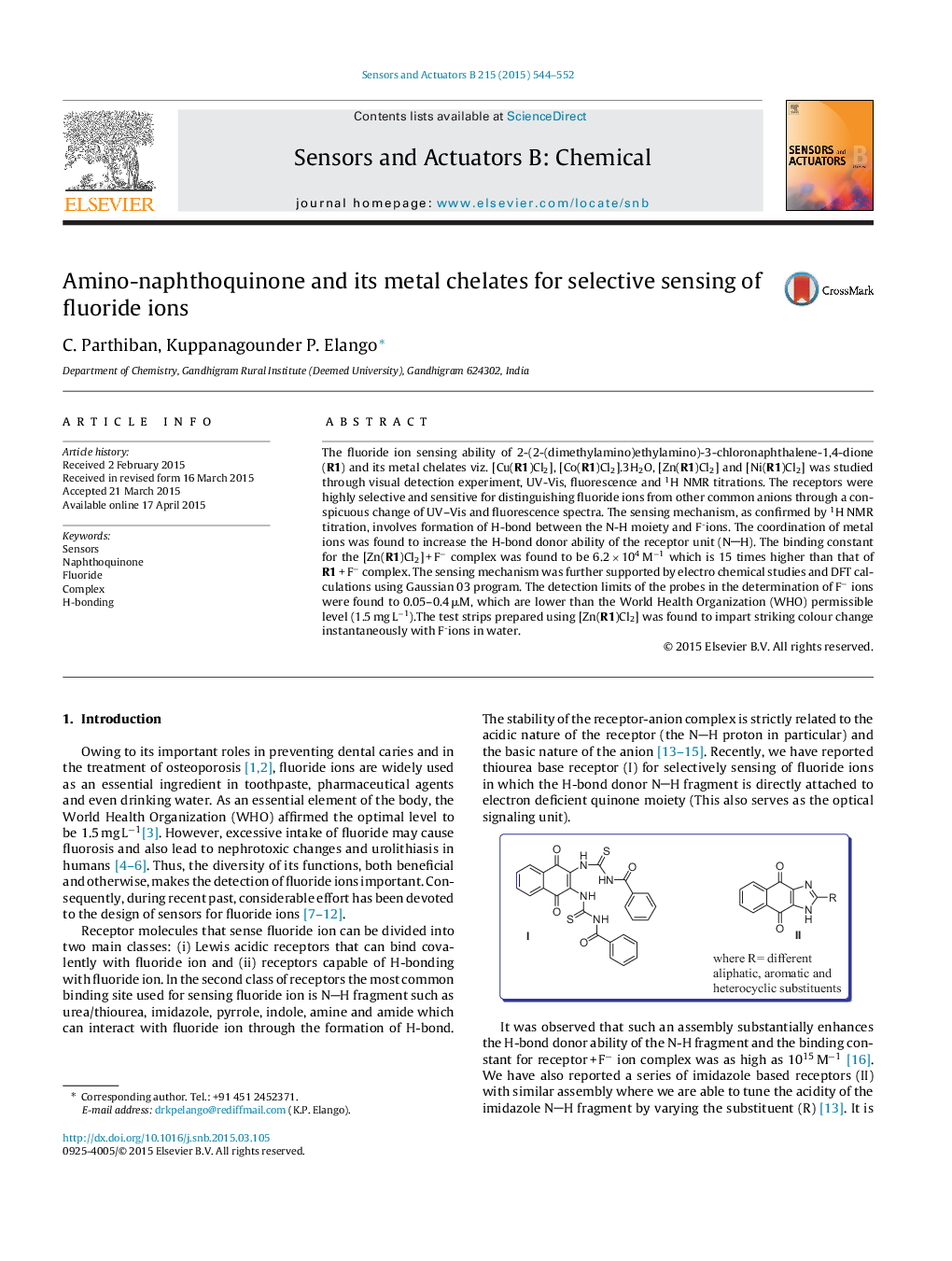| Article ID | Journal | Published Year | Pages | File Type |
|---|---|---|---|---|
| 7145923 | Sensors and Actuators B: Chemical | 2015 | 9 Pages |
Abstract
The fluoride ion sensing ability of 2-(2-(dimethylamino)ethylamino)-3-chloronaphthalene-1,4-dione (R1) and its metal chelates viz. [Cu(R1)Cl2], [Co(R1)Cl2].3H2O, [Zn(R1)Cl2] and [Ni(R1)Cl2] was studied through visual detection experiment, UV-Vis, fluorescence and 1H NMR titrations. The receptors were highly selective and sensitive for distinguishing fluoride ions from other common anions through a conspicuous change of UV-Vis and fluorescence spectra. The sensing mechanism, as confirmed by 1H NMR titration, involves formation of H-bond between the N-H moiety and F-ions. The coordination of metal ions was found to increase the H-bond donor ability of the receptor unit (NH). The binding constant for the [Zn(R1)Cl2] + Fâ complex was found to be 6.2 Ã 104 Mâ1 which is 15 times higher than that of R1 + Fâ complex. The sensing mechanism was further supported by electro chemical studies and DFT calculations using Gaussian 03 program. The detection limits of the probes in the determination of Fâ ions were found to 0.05-0.4 μM, which are lower than the World Health Organization (WHO) permissible level (1.5 mg Lâ1).The test strips prepared using [Zn(R1)Cl2] was found to impart striking colour change instantaneously with F-ions in water.
Related Topics
Physical Sciences and Engineering
Chemistry
Analytical Chemistry
Authors
C. Parthiban, Kuppanagounder P. Elango,
